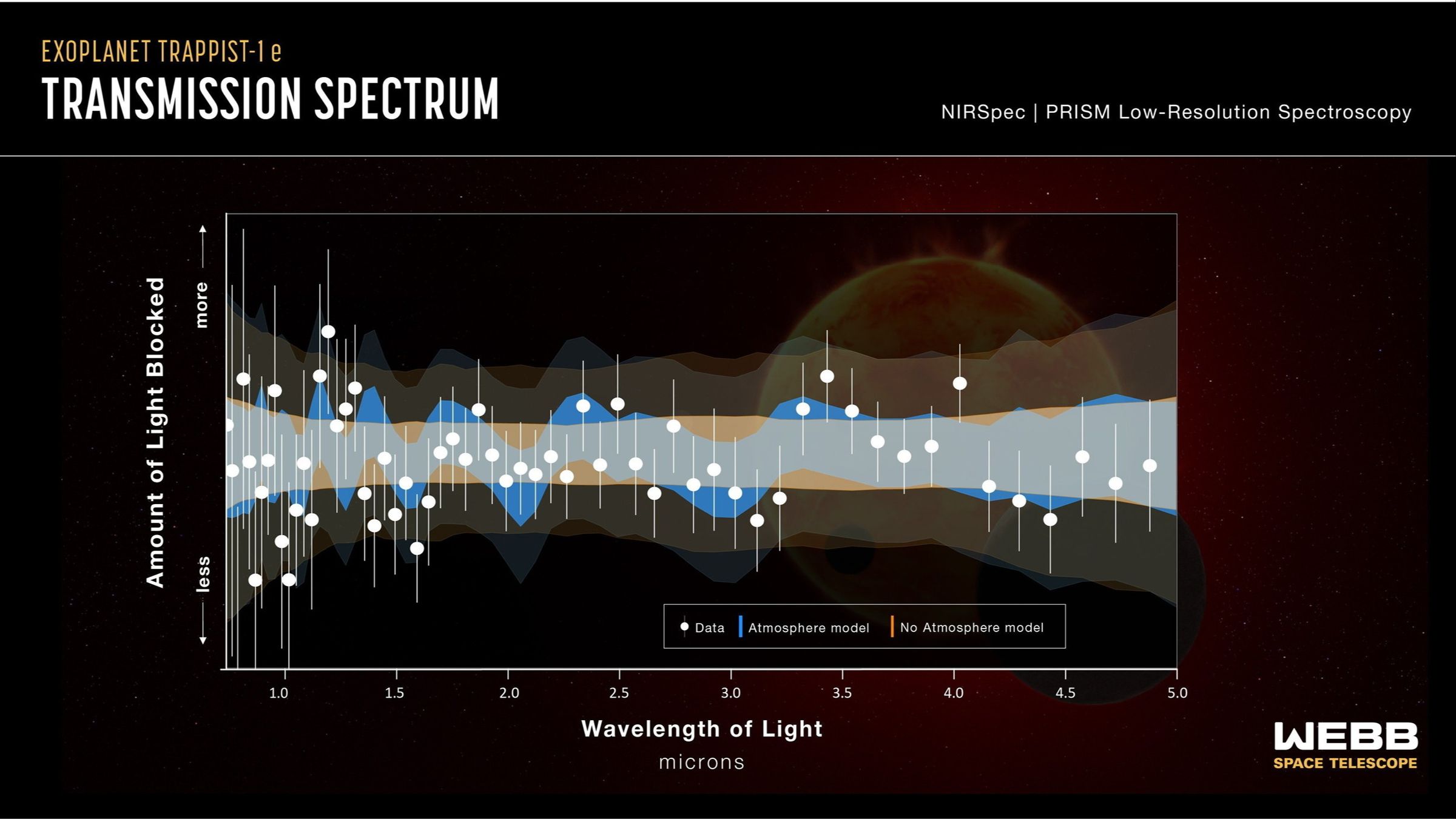尊敬的用户您好,这是来自FT中文网的温馨提示:如您对更多FT中文网的内容感兴趣,请在苹果应用商店或谷歌应用市场搜索“FT中文网”,下载FT中文网的官方应用。
An Earth-sized planet 40 light years away has emerged as a target in the international search for extraterrestrial habitable worlds and evidence of life.
一颗距离地球约40光年的类地行星,已成为国际搜寻可居住系外世界和生命证据的重点目标。
Scientists using data from the largest telescope in space said Trappist-1e could have liquid water and an atmosphere rich in gases such as nitrogen, which makes up more than three-quarters of the Earth’s air.
利用太空中最大望远镜的数据的科学家表示,TRAPPIST‑1e 可能存在液态水,并拥有富含氮气等气体的大气层;在地球大气中,氮气占比超过四分之三。
Powerful new means of astronomical observation and analysis have boosted the quest to unlock the secrets of so-called exoplanets such as Trappist-1e, which are outside our solar system.
更为强大的新型天文观测与分析手段,正推动人类破解太阳系外所谓“系外行星”(如 TRAPPIST‑1e)奥秘的探索。
“We finally have the telescope and tools to search for habitable conditions in other star systems, which makes today one of the most exciting times for astronomy,” said Ryan MacDonald, a co-author of the research published in the Astrophysical Journal Letters journal on Monday. “Trappist-1e has long been considered one of the best habitable zone planets to search for an atmosphere.”
“我们终于拥有了可以在其他恒星系统中寻找宜居条件的望远镜和工具,这使得当今成为天文学最令人振奋的时期之一,”周一发表于《天体物理学期刊快报》的研究合著者瑞安•麦克唐纳(Ryan MacDonald)说。“TRAPPIST-1e长期以来一直被认为是寻找大气层的最佳宜居带行星之一。”
The scientists harnessed structural data on Trappist-1e from the James Webb Space Telescope, which was launched in 2021 to probe the history of the universe. The cosmic observatory can measure how the composition of light from Trappist-1e’s star changes after passing through the region where the planet’s atmosphere would be. The researchers spent more than a year correcting readings to account for the distorting effects of magnetic fields on the star’s surface.
科学家利用詹姆斯•韦布太空望远镜(James Webb Space Telescope)获取的TRAPPIST-1e结构数据开展研究。这台于2021年发射、用于探寻宇宙历史的太空天文台,能够测量来自TRAPPIST-1e母恒星的光在穿过该行星大气可能所在的区域后其成分发生了怎样的变化。研究人员耗时一年多对读数进行校正,以消除恒星表面磁场造成的畸变效应。


They concluded that Trappist-1e could have an atmosphere that would allow the existence of surface water in the form of a global ocean or icy expanse. Such an atmosphere might contain gases such as nitrogen, which plays a crucial role in sustaining ecosystems on Earth.
他们得出结论:TRAPPIST-1e 可能拥有一种大气,使其表面能够以全球性海洋或广袤冰原的形式存在液态水。这种大气可能含有氮气等气体,而氮在维系地球生态系统方面发挥着关键作用。
The researchers could not yet rule out that Trappist-1e was “a bare rock with no atmosphere,” warned MacDonald, a lecturer in extrasolar planets at the University of St Andrews. They hope to use further data gathered by the Webb telescope over the coming years as it continues to orbit the sun.
在圣安德鲁斯大学(St Andrews)担任系外行星讲师的麦克唐纳警告称,研究人员尚无法排除Trappist-1e是“没有大气层的裸岩行星”。他们希望在未来几年里,随着詹姆斯•韦布太空望远镜继续绕日运行,利用其收集的更多数据。
The discovery of thousands of exoplanets has widened the hunt for habitable worlds. Some planets, such as Jupiter and Saturn, are “gas giants” with no rocky surface or atmosphere to make them amenable to Earth’s carbon-based lifeforms.
数以千计系外行星的发现拓宽了人类对宜居世界的搜寻。一些行星是“气体巨行星”,既没有岩石表面,也缺乏能让地球碳基生命存活的大气。
The unveiling of an international project in April pointing to what its authors claimed as the strongest evidence yet of extraterrestrial life has sparked intense debate. The scientists said they had found molecules suggesting the possible activity of living organisms in the atmosphere of the planet K2-18b, 124 light years from Earth.
今年4月,一项国际项目的公布引发了激烈争论。其作者宣称,这是迄今为止关于地外生命最有力的证据。科学家表示,他们在距离地球124光年的行星K2-18b的大气中发现了可能由生命活动产生的分子。
K2-18b is a so-called Hycean world: a world covered in liquid water with a hydrogen-rich atmosphere at habitable temperatures. The scientists stopped short of claiming they had found definitive proof of life, while some others in the field stressed the possibility of alternative explanations for the data.
K2-18b 是所谓的“氢气海洋”(Hycean)世界:一个被液态水覆盖、在适居温度下拥有富氢大气的行星。科学家并未断言已发现生命的确凿证据,而该领域的一些研究者则强调,这些数据可能还有其他解释。
The Trappist-1e research was “incredibly significant” in its approach to analysing possible atmospheres of rocky exoplanets orbiting active stars, said Paul Rimmer, an astrochemist at Cambridge university. If it were found to be habitable, the next stage would be to search for signature chemicals in the atmosphere indicating life, he added, although this would not be straightforward.
剑桥大学的天体化学家保罗•里默(Paul Rimmer)表示,关于TRAPPIST-1e的研究在分析环绕活跃恒星运行的岩质系外行星可能存在的大气方面“意义非凡”。他补充说,如果被发现具备宜居性,下一步将是在其大气中寻找指示生命存在的标志性化学物质,尽管这并非易事。
“We have poor data for exoplanets and we can’t really go there any time soon to check if there’s life,” he said. This meant it might only be possible to attribute the candidate chemical signatures to a group of planets, rather than knowing with high confidence about the presence of life on any individual one, he said.
他说:“我们对系外行星的数据很匮乏,而且短期内也不可能亲自前往核查是否存在生命。”他表示,这意味着我们可能只能将这些候选化学特征归因于一组行星,而难以对任何单个行星上是否存在生命作出高度确信的判断。